So I’m digging through marketing reports last Tuesday (yeah, I know, riveting stuff) when this one stat literally made me put my coffee down: companies using advanced analytics see a 25% boost in conversion rates on average. That number hit different because I’d just spent months watching businesses throw money at campaigns that looked good on paper but delivered zilch in real results.
Look, we’ve all been there – reading another “revolutionary” marketing strategy that promises the moon but leaves you wondering if it actually works outside of perfect laboratory conditions. And honestly? I’ve fallen for the ‘revolutionary strategy’ BS more times than I care to admit. You know the drill: fancy infographics, impressive percentages, and absolutely zero mention of the $50K they spent testing it or the six-month setup time.
Here’s the thing – most marketing advice feels completely disconnected from reality. You need proof that strategies actually move the needle, not just pretty charts and feel-good metrics that make your boss happy for about five minutes.
That’s exactly what you’ll find here. I’ve dug through 25 marketing case studies that didn’t just generate buzz – they delivered measurable, bottom-line results. These aren’t theoretical frameworks or wishful thinking. They’re real campaigns from real companies that faced real challenges and found solutions that actually worked. And trust me, I’ve included the messy parts too.

Table of Contents
-
Essential Criteria for Evaluating Marketing Case Studies
-
Search Engine Optimization Success Stories
-
HubSpot’s Topic Cluster Revolution
-
Backlinko’s Skyscraper Technique Mastery
-
Zappos’ Long-tail Keyword Domination
-
Local Plumber’s Emergency Services Breakthrough
-
-
Pay-Per-Click and Paid Advertising Wins
-
Dollar Shave Club’s Viral Video Phenomenon
-
WordStream’s AdWords Optimization System
-
Unbounce’s Facebook Retargeting Strategy
-
Purple Mattress YouTube Content Empire
-
Slack’s Product Hunt Launch Strategy
-
-
Content Marketing and Social Media Victories
-
Red Bull’s Content Marketing Universe
-
Glossier’s Instagram Community Revolution
-
Airbnb’s User-Generated Content Strategy
-
Buffer’s Radical Transparency Approach
-
GoPro’s Customer-Centric Content Strategy
-
-
Email Marketing and Automation Excellence
-
Grammarly’s Behavioral Onboarding Sequence
-
Spotify’s Data-Driven Email Campaigns
-
Sephora’s Advanced Segmentation Strategy
-
Dropbox’s Referral Email Program
-
-
Conversion Rate Optimization Breakthroughs
-
Obama Campaign’s A/B Testing Revolution
-
Basecamp’s Pricing Page Simplification
-
VWO’s Homepage Conversion Optimization
-
Crazy Egg’s Video Landing Page Test
-
-
Integrated Marketing and Omnichannel Campaigns
-
Nike’s “Just Do It” Anniversary Campaign
-
Starbucks’ Mobile-First Loyalty Program
-
Amazon’s Prime Day Marketing Machine
-
-
How The Marketing Agency Can Help You Implement These Strategies
-
Final Thoughts
TL;DR
-
Successful marketing case studies share common traits: measurable ROI, transparent methodology, scalable frameworks, and clear attribution models
-
SEO strategies like HubSpot’s topic clusters and Zappos’ long-tail approach deliver sustainable organic growth with 100%+ traffic increases
-
Viral PPC campaigns (Dollar Shave Club’s $9M from $4,500 video) prove creative content can generate massive ROI when executed strategically – but don’t count on recreating this magic
-
Content marketing empires like Red Bull’s $7.5B revenue model show how brands can transcend product categories through storytelling (if you’ve got their budget)
-
Email automation sequences (Grammarly’s 35% conversion boost) demonstrate the power of behavioral triggers and personalization at scale
-
Conversion optimization wins often come from simplification – Basecamp’s single pricing tier increased signups 14% by reducing choice paralysis
-
Integrated campaigns like Nike’s Kaepernick campaign can drive $6B in brand value despite initial controversy when values align authentically
-
The most replicable strategies focus on systematic testing, clear attribution, and frameworks that scale across industries and budgets (start with two, maybe three max)
Essential Criteria for Evaluating Marketing Case Studies
Not all case studies deserve your attention. I’ve seen way too many “success stories” that crumble under scrutiny – impressive vanity metrics hiding disappointing business results, cherry-picked data that conveniently ignores the dozen failed experiments, or strategies so resource-intensive they’re basically marketing fantasy for anyone without a Fortune 500 budget.
Smart marketers evaluate case studies through a structured lens. You need more than just big numbers and flashy results. The most valuable marketing case study examples share specific characteristics that separate genuine insights from marketing fluff.
|
Evaluation Criteria |
What to Look For |
Red Flags to Avoid |
|---|---|---|
|
Measurable ROI |
Revenue growth, conversion rates, cost per acquisition, ROAS |
Vanity metrics like impressions, followers without business impact |
|
Transparency |
Clear methodology, timeline, budget, challenges disclosed |
Perfect success stories with no setbacks or process details |
|
Scalability |
Frameworks adaptable to different budgets and industries |
Resource-intensive strategies requiring massive teams/budgets |
|
Strategic Alignment |
Clear objectives tied to specific business goals |
Tactics without clear connection to business outcomes |
|
Market Context |
Timing, competitive landscape, economic conditions explained |
Strategies presented without situational context |
|
Attribution Clarity |
Specific tracking methods and success attribution explained |
Vague claims about which activities drove results |
|
Sustainability |
Long-term competitive advantages demonstrated |
Short-term spikes that competitors quickly replicated |
Measurable ROI and Performance Metrics
Real case studies present clear, quantifiable results tied directly to business outcomes. You want conversion rates, revenue growth, cost per acquisition, and return on ad spend – not just impressions or follower counts that make your social media manager feel good but don’t pay the bills. The best examples show exactly how marketing activities translated into dollars and cents.
Transparency and Data Integrity
Quality case studies reveal their methodology, including timeline, budget allocation, testing parameters, and challenges encountered. They don’t hide the messy parts or pretend everything went perfectly from day one. When a marketing case study seems too polished or lacks process details, that’s your cue to dig deeper or move on to something more realistic.
Scalability and Replicability
Can you actually implement this strategy with your resources? Here’s where most case studies fall apart. The most valuable marketing case studies provide frameworks that adapt to different business sizes, industries, and market conditions. They offer principles you can scale up or down based on your available budget and team capacity – not just “hire 15 content creators and launch in 47 countries simultaneously.”
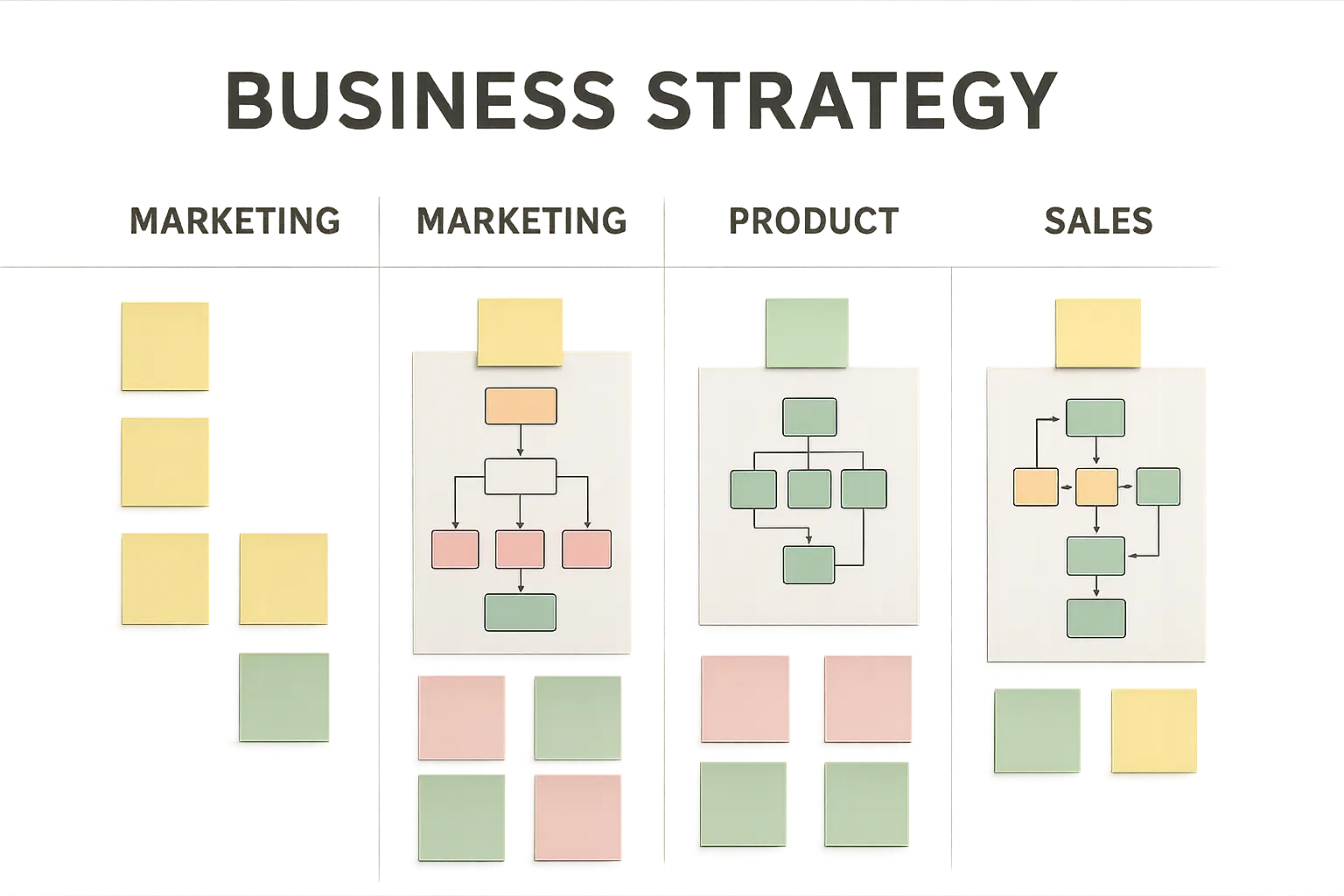
Strategic Alignment with Business Goals
A brilliant brand awareness campaign won’t help if you need lead generation next quarter. The best case studies clearly define their objectives and show how tactics aligned with specific business goals. This clarity helps you identify which strategies match your current priorities instead of chasing whatever sounds coolest.
Market Context and Timing
Understanding when and where a strategy succeeded matters enormously. Market conditions, competitive landscape, and timing all influence results. Strategies that worked during specific economic periods or platform changes may need significant adaptation for current circumstances. Just because it worked in 2019 doesn’t mean it’ll work now.
Attribution Modeling Clarity
Strong case studies explain exactly how they attribute success to specific marketing activities. This becomes crucial in multi-channel campaigns where customer touchpoints overlap like crazy. Without clear attribution, you can’t understand which elements actually drove results versus which ones just happened to be running at the same time.
Long-term Sustainability
Quick wins feel great, but sustainable growth builds businesses. The most valuable case studies demonstrate strategies that create lasting competitive advantages rather than short-term spikes that fade when competitors catch up or platforms change their algorithms.
Search Engine Optimization Success Stories
SEO case studies often promise the world but deliver disappointment. You’ve probably read dozens claiming “300% traffic increases” without explaining the methodology or showing actual business impact. Half the time they started with basically zero traffic, so tripling nothing isn’t exactly impressive.
The following four marketing case study examples cut through the noise with transparent processes and measurable results. But fair warning – SEO takes time. Like, months. I know that’s not what you want to hear when your boss is breathing down your neck about this quarter’s numbers, but that’s reality.
Before diving into these specific examples, understanding the fundamentals of SEO ROI calculation helps you evaluate which strategies deliver genuine business value rather than just vanity metrics.
1. HubSpot’s Topic Cluster Revolution
HubSpot faced a classic problem: competing for highly competitive marketing keywords against established players with massive domain authority. Their traditional approach of targeting individual keywords wasn’t cutting through the noise, and honestly, it was getting expensive to compete for terms like “marketing automation” when everyone and their mother was bidding on them.
Their solution? The topic cluster model. Instead of creating isolated blog posts targeting specific keywords, they built comprehensive pillar pages around broad topics, then created supporting content targeting related long-tail keywords. Each cluster piece linked back to the pillar page, creating a web of topical authority.
The results speak volumes: 106% increase in organic traffic over 12 months. More importantly, this wasn’t just vanity traffic – the structured approach improved their search rankings for competitive terms and generated qualified leads that actually converted.
What makes this replicable? The framework scales regardless of industry or company size. You identify broad topics relevant to your audience, create comprehensive pillar content, then build supporting pieces that dive deeper into specific aspects. The internal linking strategy signals topical expertise to search engines while providing genuine value to readers.
Topic Cluster Implementation Example: A local fitness studio implemented HubSpot’s topic cluster strategy by creating a pillar page about “Home Workout Equipment” and supporting it with 15 cluster articles covering specific equipment reviews, workout routines, and maintenance tips. Within six months, they saw a 180% increase in organic traffic and 45% more gym membership inquiries, proving the strategy works for local businesses with limited resources.
2. Backlinko’s Skyscraper Technique Mastery
Brian Dean’s Backlinko faced the challenge of building authority in the incredibly competitive SEO space. His solution became legendary: the Skyscraper Technique. And look, I’ll be honest – I tried this on a client’s blog last year. Spent three weeks creating what I thought was the ultimate guide to email marketing. Got exactly two backlinks. Turns out I missed the whole ‘outreach’ part. Rookie mistake.
The process seems deceptively simple. Research top-performing content in your space, create something significantly better (10x better, not 10% better), then conduct targeted outreach to websites that linked to the original content. The key insight? People link to the best resource available, so become that resource.
Dean’s results were dramatic: 110% increase in organic traffic in just 14 days. But here’s what nobody tells you about this technique – the “outreach” part is where most people fail. You can’t just email random people saying “hey, link to my awesome content.” You need genuine relationships and compelling reasons.
This technique works because it addresses a fundamental truth about link building: you need to give people a compelling reason to link to you. By creating genuinely superior resources, you provide that reason while building topical authority. But don’t expect overnight success – building those relationships takes time.

3. Zappos’ Long-tail Keyword Domination
Zappos couldn’t compete with Amazon on broad terms like “shoes” or “sneakers.” Smart move, honestly – trying to outrank Amazon for generic terms is like bringing a knife to a gunfight. Instead, they focused on long-tail, product-specific keywords where they could actually win.
Their strategy involved creating detailed product descriptions, encouraging user-generated content, and optimizing category pages for specific shoe models and brands. Instead of fighting for “running shoes,” they owned searches for “Nike Air Max 270 women’s size 8” and thousands of similar specific queries.
The results? They dominated search results for specific shoe models and brands, driving highly qualified traffic with strong purchase intent. While they couldn’t provide exact traffic numbers (competitive reasons), their market position in footwear e-commerce speaks to the strategy’s effectiveness.
This approach works particularly well for e-commerce businesses. Long-tail keywords typically have lower competition but higher conversion rates because they capture users with specific purchase intent. The cumulative effect of ranking for thousands of specific terms often exceeds the traffic from a few competitive broad keywords.
4. Local Plumber’s Emergency Services Breakthrough
A local plumbing company faced the challenge of competing in a saturated local market against established competitors with bigger marketing budgets. Sound familiar? Their solution focused on hyperlocal SEO with Google My Business optimization.
They created location-specific landing pages for each service area, built local citations consistently across directories, and implemented a systematic review management process. The key was going beyond basic local SEO to create genuinely useful local content.
Results: 340% increase in local leads within six months. Six months later? This guy was turning away customers. I’m talking about a plumber who couldn’t figure out Google My Business suddenly booking three weeks out. The strategy worked because it addressed the specific needs of local searchers while building authority signals that Google’s local algorithm rewards.
The replicable elements include consistent NAP (Name, Address, Phone) information across all platforms, location-specific content that addresses local concerns, and a systematic approach to earning and managing customer reviews. This framework applies to any local business regardless of industry.
Pay-Per-Click and Pai
Pay-Per-Click and Paid Advertising Wins
Paid advertising case studies often focus on creative brilliance while ignoring the systematic approaches that actually drive results. These five marketing case study examples show how strategic thinking, systematic optimization, and clear measurement create sustainable paid advertising success.
But here’s the reality check – most of these “overnight success” stories took months or years to perfect. Don’t expect to recreate Dollar Shave Club’s magic with your first video attempt.
Understanding the fundamentals of ROAS calculation becomes essential when evaluating these paid advertising strategies to ensure you’re measuring true profitability rather than just impressive-looking metrics.
|
Campaign |
Investment |
Results |
Key Success Factor |
|---|---|---|---|
|
Dollar Shave Club Video |
$4,500 |
$9M revenue |
Direct response messaging disguised as entertainment |
|
WordStream Optimization |
Varies by client |
28% CPC reduction |
Systematic account restructuring and quality score improvement |
|
Unbounce Retargeting |
Not disclosed |
300% conversion increase |
Behavioral segmentation and sequential messaging |
|
Purple YouTube Strategy |
$75M first 18 months |
Significant ROI |
Educational content addressing customer objections |
|
Slack Product Hunt |
Minimal cost |
8,000 signups/24hrs |
Strategic community engagement and timing |
5. Dollar Shave Club’s Viral Video Phenomenon
Dollar Shave Club faced an impossible challenge: disrupting the razor market dominated by Gillette’s massive marketing budget and established retail relationships. Their solution became a masterclass in direct response marketing disguised as entertainment.
The famous launch video cost just $4,500 to produce but generated $9 million in revenue. The key wasn’t just humor – it was a perfectly crafted direct response message that addressed customer pain points (expensive razors, inconvenient shopping) while presenting a clear solution and compelling call-to-action.
Now, before you get all excited about recreating this magic with a selfie video – let’s pump the brakes. This was 2012. YouTube was different. Going viral was easier. Plus, they had a genuinely revolutionary business model. Your local dentist office isn’t going to recreate this magic with a smartphone and good intentions.
What made this work? The video combined authentic brand voice with clear value proposition and immediate social media amplification. The humor made it shareable, but the underlying direct response structure drove conversions.
The replicable elements include understanding your audience’s frustrations, crafting messages that address those frustrations directly, and creating content that serves both entertainment and conversion goals. You don’t need viral success to apply these principles effectively – but you do need genuine value and authentic personality.
6. WordStream’s AdWords Optimization System
WordStream tackled a common problem: improving PPC performance across diverse client accounts with varying budgets and industries. Their systematic approach focused on fundamental optimization principles rather than creative tactics – which honestly is where most businesses should start.
Their methodology involved systematic account restructuring, quality score improvement through ad group segmentation, negative keyword implementation, and landing page alignment. The key insight? Most PPC accounts fail due to poor structure, not insufficient creativity. They basically tore apart every single campaign – and I mean everything. Ad groups that made no sense, keywords that were bleeding money, landing pages that looked like they were designed in 2003. Results: Average 28% decrease in cost-per-click across their client base. More importantly, this improvement came from systematic optimization that any business could implement with proper knowledge and execution.
The framework includes organizing campaigns by theme, creating tightly themed ad groups, implementing comprehensive negative keyword lists, and ensuring message consistency from ad copy through landing page. These fundamentals drive results regardless of industry or budget size. But here’s what drives me nuts – most people skip the boring structural stuff and jump straight to “creative optimization.” Don’t do that.
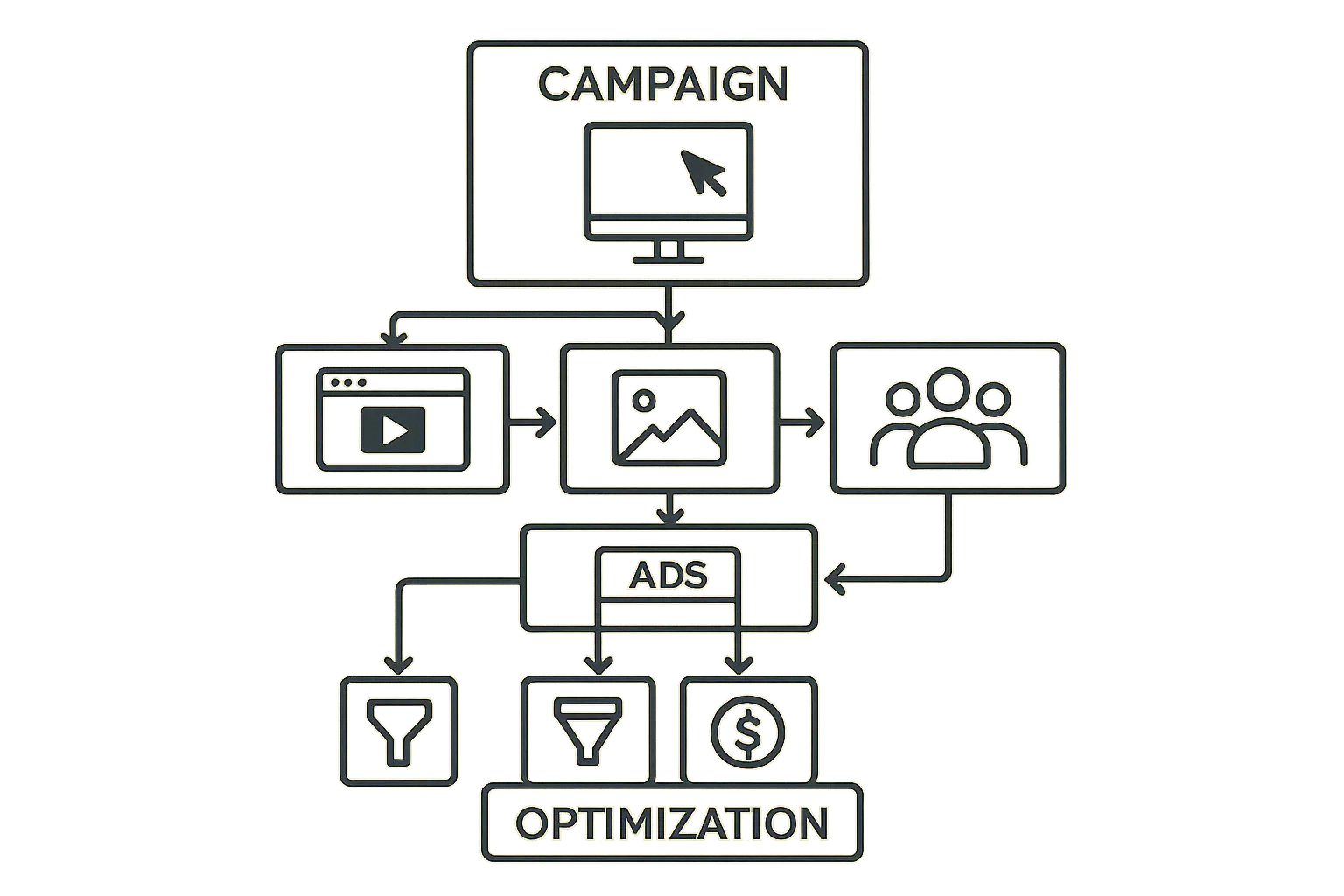
7. Unbounce’s Facebook Retargeting Strategy
Unbounce faced the challenge of converting website visitors who didn’t initially convert – a problem every business encounters. And let’s be real, most visitors bounce faster than a bad check. Their solution involved sophisticated retargeting funnels with multiple touchpoints designed to address different objections and motivations.
They implemented audience segmentation based on behavior (pages visited, time spent, actions taken), dynamic creative optimization that showed different messages to different segments, and sequential messaging that evolved based on user engagement.
The results were impressive: 300% increase in conversion rate from retargeted traffic. The strategy worked because it recognized that different visitors have different objections and motivations, requiring tailored approaches. Some people need social proof, others need pricing info, and some just need to be reminded you exist.
Key replicable elements include segmenting audiences based on behavior rather than demographics, creating message sequences that address different objections, and testing creative variations systematically rather than randomly. Just don’t expect to set this up in an afternoon – proper retargeting takes time to build and optimize.
8. Purple Mattress YouTube Content Empire
Purple entered the crowded online mattress market against established players with significant advertising budgets. Their YouTube strategy focused on educational and entertaining content that demonstrated their product’s unique benefits – basically answering the question “how do I know this mattress won’t suck?”
Their approach involved scientific product demonstrations, consistent content calendar execution, and strategic influencer partnerships. The key insight? Educational content that entertains while informing can drive both brand awareness and direct conversions.
Results: $75 million in revenue in their first 18 months, with YouTube content playing a central role in customer acquisition. The strategy worked because it addressed the fundamental challenge of buying mattresses online – the inability to test the product.
Replicable elements include creating content that addresses customer objections, maintaining consistent publishing schedules, and balancing entertainment with education. The framework applies to any product or service where customer education influences purchase decisions. But let’s be honest – you need decent production values and actual personality to make this work.
9. Slack’s Product Hunt Launch Strategy
Slack needed initial traction in the enterprise communication space against established competitors. Their Product Hunt launch strategy involved strategic community engagement and stakeholder mobilization – basically, they worked the system intelligently.
The approach included building relationships within the Product Hunt community before launch, coordinating internal team efforts to maximize launch day impact, and leveraging the launch momentum for broader media coverage.
Results: 8,000 signups in the first 24 hours, contributing to their path toward a $340 million valuation. The strategy worked because it provided social proof and media attention that amplified their broader marketing efforts.
Key replicable elements include building community relationships before needing them, coordinating team efforts for maximum impact, and using platform-specific launches as springboards for broader marketing initiatives. Just remember – Product Hunt isn’t magic. You still need a genuinely good product.
Content Marketing and Social Media Victories
Content marketing case studies often showcase creative brilliance without explaining the systematic approaches that create sustainable results. These five marketing case study examples demonstrate how strategic content creation builds lasting competitive advantages through different methodologies.
Fair warning: Don’t try to copy Red Bull unless you’ve got their budget. Seriously. I’ve seen too many small businesses burn through their marketing budget trying to become the “Red Bull of accounting software” or whatever.
10. Red Bull’s Content Marketing Universe
Red Bull transformed from an energy drink company into a media empire by building a comprehensive content ecosystem around extreme sports and adventure. Their challenge was differentiating in a commodity market where products are largely interchangeable – I mean, how different can energy drinks really be?
Their strategy involved original content production across multiple formats (video, print, events), strategic athlete sponsorships that created authentic content opportunities, and event marketing that generated both content and direct brand experiences.
The results speak for themselves: $7.5 billion in annual revenue with content driving brand loyalty that extends far beyond product features. Red Bull created a lifestyle brand where the product becomes secondary to the experience and identity.
What makes this approach work? They identified their audience’s passions (extreme sports, adventure, pushing limits) and built content that served those interests while subtly reinforcing brand values. The content provides genuine value independent of product promotion.
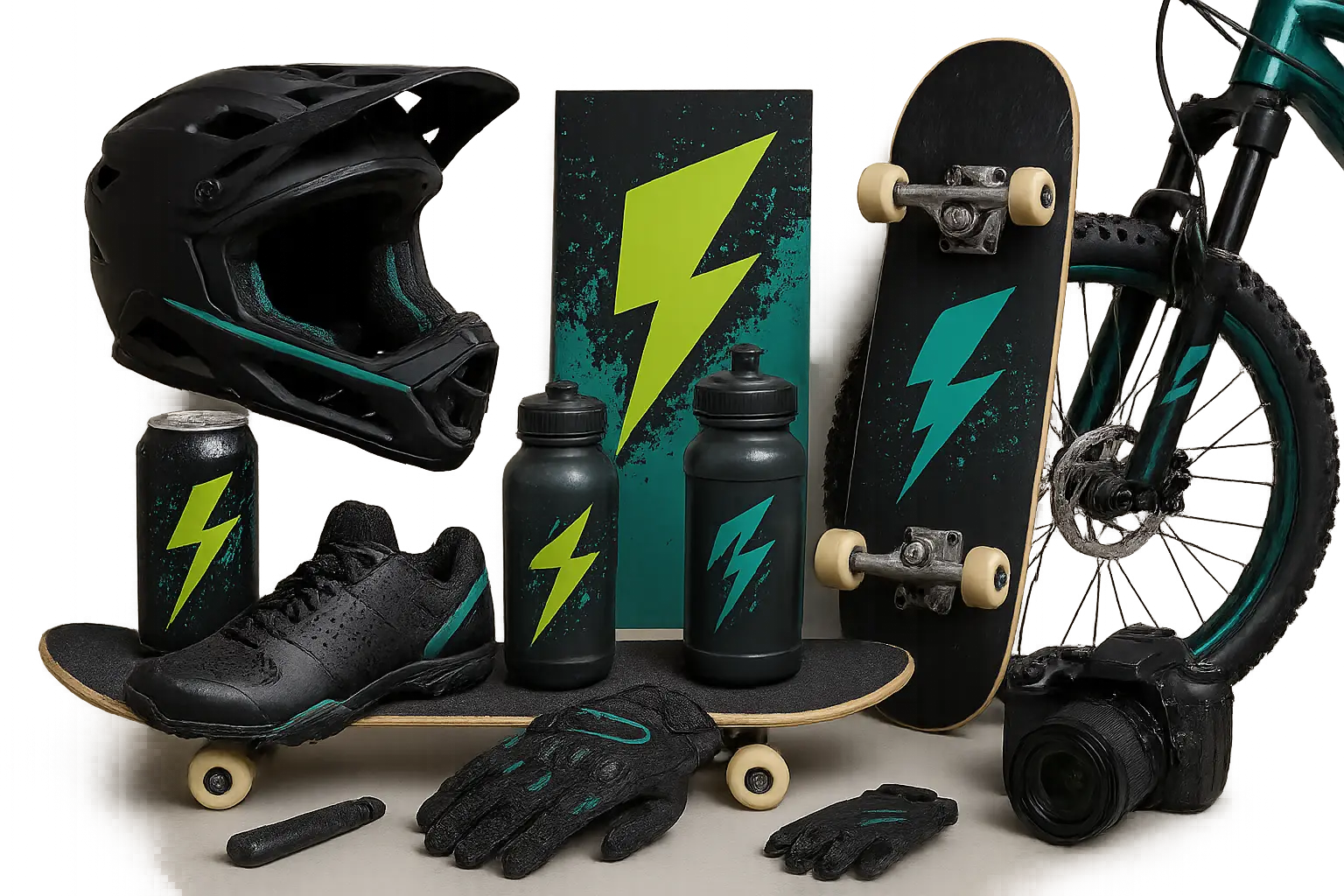
Replicable elements include identifying audience passions that align with brand values, creating content that serves those interests authentically, and building content ecosystems rather than isolated pieces. The scale may vary, but the principles apply across industries. Just don’t expect to sponsor Formula 1 racing on a local business budget.
11. Glossier’s Instagram Community Revolution
Glossier competed against established beauty brands with massive marketing budgets by building a community-first approach on Instagram. Their challenge was creating brand loyalty in a crowded market where product differentiation is often minimal – seriously, how many different ways can you make lipstick?
Their strategy focused on user-generated content featuring real customers, inclusive brand messaging that celebrated diverse beauty standards, and direct customer engagement that made followers feel heard and valued.
Results: They grew from a blog to a $1.2 billion valuation in six years, with Instagram community building playing a central role in customer acquisition and retention. The strategy worked because it made customers feel like partners in the brand rather than passive consumers.
Key replicable elements include featuring real customers in marketing materials, engaging directly with community members rather than broadcasting messages, and creating inclusive messaging that makes diverse audiences feel represented. The approach works particularly well for brands where community identity matters more than product features.
Community Building Implementation: A small skincare brand with 5,000 Instagram followers implemented Glossier’s community-first approach by featuring customer photos daily, responding personally to every comment, and creating inclusive messaging around “real skin.” Within eight months, they grew to 35,000 engaged followers and saw a 250% increase in direct-to-consumer sales, proving community building works regardless of initial audience size.
12. Airbnb’s User-Generated Content Strategy
Airbnb faced the fundamental challenge of building trust in peer-to-peer accommodation sharing. Traditional hotel marketing wouldn’t work because the product was inherently different – real people’s homes rather than standardized rooms. Plus, who’s gonna trust staying in a stranger’s house without serious social proof?
Their approach leveraged host and guest stories for authentic marketing, implemented a professional photography program that improved listing quality, and established community guidelines that maintained quality standards while preserving authenticity. This comprehensive strategy demonstrates principles explored in our detailed Airbnb case study analysis of their growth tactics.
Results: 20% reduction in customer acquisition costs while improving conversion rates. The strategy worked because it addressed the core barrier to adoption – trust – through authentic stories from real users rather than corporate messaging.
The replicable framework includes encouraging customers to share their experiences, providing tools and incentives for quality content creation, and maintaining standards that preserve authenticity while ensuring quality. This approach works for any business where trust and social proof influence purchase decisions.
13. Buffer’s Radical Transparency Approach
Buffer competed in the crowded social media management space by building their brand around complete transparency in business operations. Their challenge was differentiating against established competitors with larger marketing budgets – so they decided to show everything.
Their strategy involved sharing everything: open salary policies, public revenue dashboards, authentic leadership content that showed both successes and failures. The key insight? Transparency builds trust more effectively than traditional marketing messages.
Results: Built a loyal customer base leading to $20 million in annual recurring revenue. The strategy worked because it created genuine differentiation in a market where most companies communicate through corporate speak and carefully crafted messages.
Replicable elements include sharing business metrics publicly, communicating authentically about challenges and failures, and building leadership content that shows real personality rather than corporate personas. The approach requires genuine commitment but creates strong competitive differentiation. Just be prepared for some uncomfortable conversations when things don’t go perfectly.
14. GoPro’s Customer-Centric Content Strategy
GoPro maintained relevance in the competitive camera market by showcasing customer adventures and achievements rather than focusing on product features. Their challenge was staying relevant as smartphone cameras improved and competition increased – basically, why buy a GoPro when your phone shoots decent video?
Their approach included video contests that encouraged user submissions, athlete partnerships that created aspirational content, and social media curation that highlighted the best customer content across platforms.
Results: Built a community of brand advocates driving organic growth that reduced reliance on paid advertising. The strategy worked because it made customers the heroes of the brand story rather than positioning the product as the star.
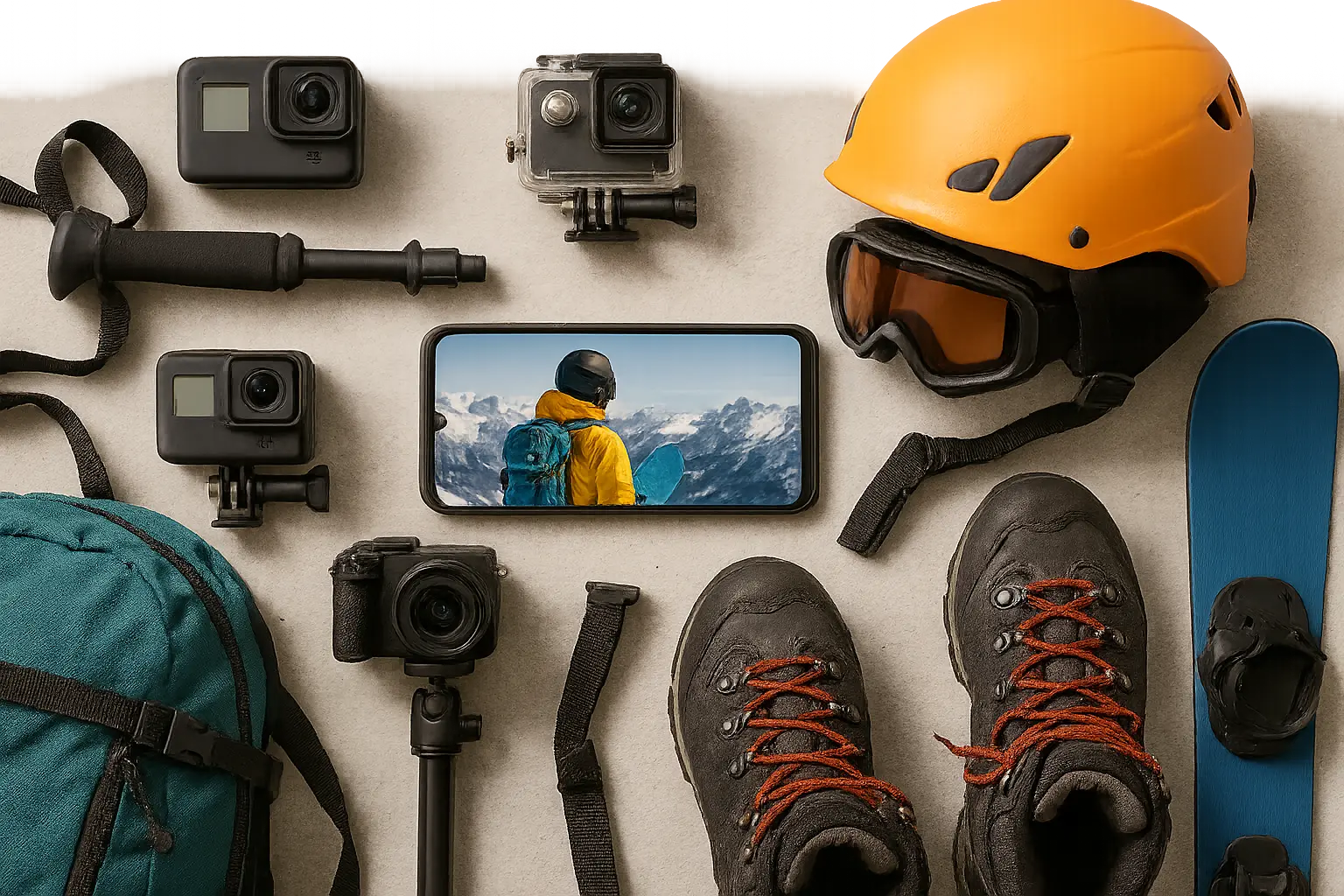
Key replicable elements include creating contests and incentives for customer content, curating and amplifying the best user submissions, and building partnerships that create aspirational content. This framework works particularly well for products that enable experiences or achievements.
Email Marketing and Automation Excellence
Email marketing case studies often focus on open rates and click-through rates while ignoring business impact. These four examples show how strategic email marketing drives real business results through systematic approaches to personalization, segmentation, and automation.
And here’s something that drives me nuts – some people are gonna tell you email marketing is dead. Those people are idiots. Sorry, not sorry. Grammarly’s 35% conversion boost didn’t happen by accident.
15. Grammarly’s Behavioral Onboarding Sequence
Grammarly faced the challenge of converting free users to premium subscribers in a market where many users were satisfied with basic functionality. Their solution involved personalized onboarding based on actual user writing patterns rather than generic welcome sequences that everyone ignores.
Their approach used behavioral triggers that activated based on user actions, value demonstration that showed specific improvements to user writing, and progressive profiling that gathered information gradually rather than overwhelming new users with 47-question surveys.
Results: 35% improvement in free-to-paid conversion rate. The strategy worked because it demonstrated value based on actual user behavior rather than assumed needs, making the premium upgrade feel necessary rather than optional.
Replicable elements include triggering emails based on user behavior rather than time intervals, demonstrating value through specific examples relevant to individual users, and gathering user information progressively to avoid overwhelming new subscribers. Just don’t expect to set this up in a weekend – behavioral triggers require proper tracking and segmentation.
|
Email Strategy |
Trigger Method |
Personalization Level |
Conversion Impact |
|---|---|---|---|
|
Grammarly Onboarding |
User behavior patterns |
Individual writing analysis |
35% improvement in free-to-paid |
|
Spotify Data Campaigns |
Listening behavior |
Personal music insights |
40% open rate increase |
|
Sephora Segmentation |
Purchase history & preferences |
Beauty profile matching |
50% revenue increase |
|
Dropbox Referrals |
Storage usage milestones |
Progress tracking |
35% of daily signups |
16. Spotify’s Data-Driven Email Campaigns
Spotify increased user engagement and retention through personalized email campaigns that leveraged their massive data collection capabilities. Their challenge was keeping users engaged with the platform beyond passive listening – basically, how do you make people care about your app when music is playing in the background?
Their strategy involved data personalization that created unique content for each user, visual storytelling that made data engaging rather than overwhelming, and seasonal campaigns that tied personal listening data to cultural moments. This approach builds on principles detailed in our comprehensive Spotify case study examining their growth strategies.
Results: 40% increase in email open rates and 25% boost in app engagement. The strategy worked because it made users feel understood while providing genuinely interesting insights about their own behavior.
Key replicable elements include using customer data to create personalized content, presenting data in visually engaging formats, and tying personal insights to broader cultural or seasonal themes. The approach works for any business that collects meaningful customer behavior data. But you actually need meaningful data first – “John clicked our homepage” isn’t exactly insight gold.
17. Sephora’s Advanced Segmentation Strategy
Sephora personalized experiences for their diverse customer base through behavioral and demographic segmentation with targeted content. Their challenge was serving customers with vastly different beauty needs, experience levels, and purchase behaviors – from makeup beginners to professional artists.
Their approach involved purchase history analysis that informed product recommendations, beauty profile segmentation that grouped customers by preferences and skill levels, and VIP program integration that provided exclusive content and offers.
Results: 50% increase in email-driven revenue. The strategy worked because it recognized that beauty customers have highly individual needs that require personalized approaches rather than mass marketing.
Replicable elements include segmenting customers based on behavior and preferences rather than just demographics, creating content that serves different experience levels, and integrating email marketing with loyalty programs for enhanced personalization.
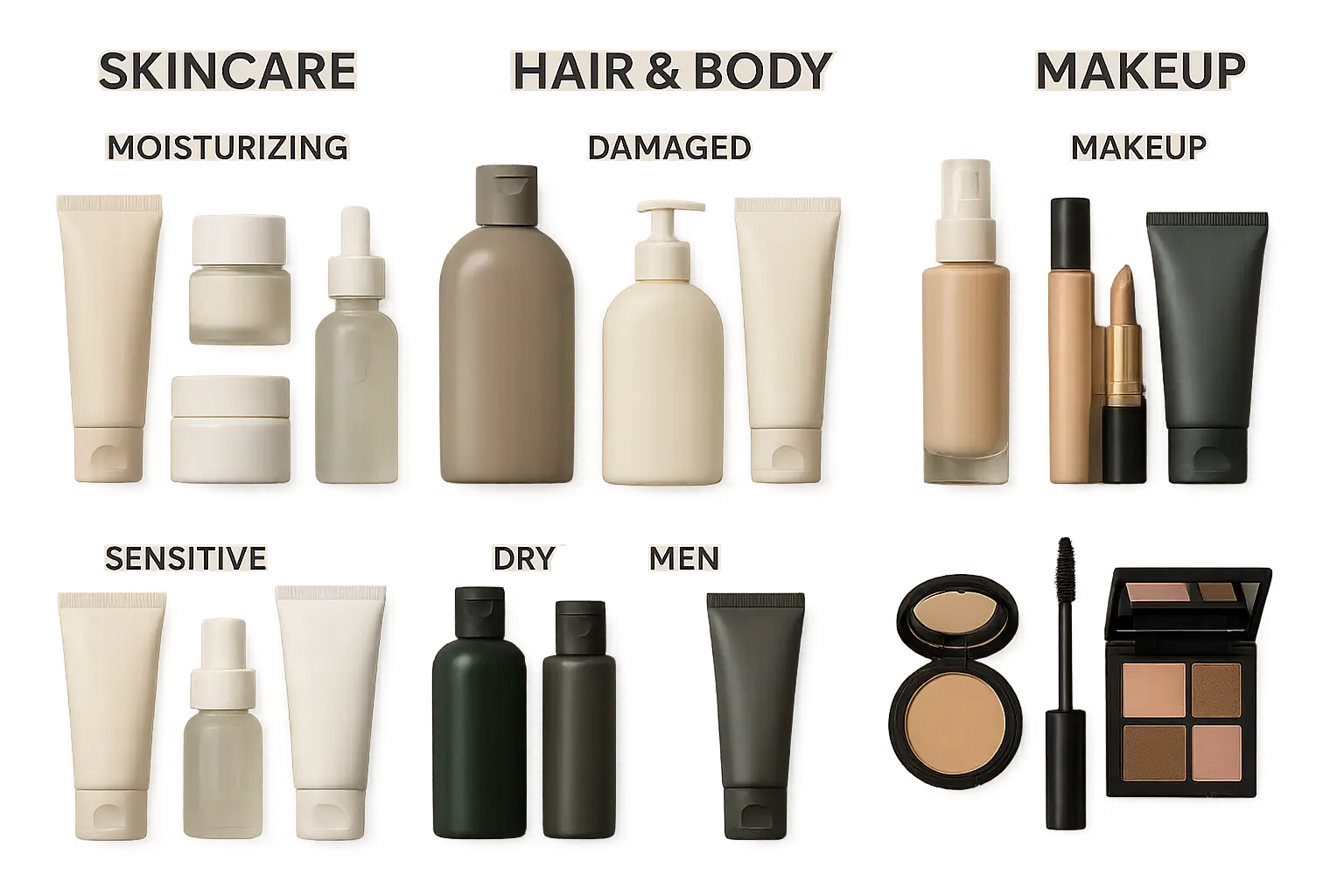
18. Dropbox’s Referral Email Program
Dropbox scaled user acquisition cost-effectively through an incentivized referral program with automated email sequences. Their challenge was growing rapidly without massive advertising budgets in a competitive cloud storage market where most people didn’t even understand what “cloud storage” meant.
Their strategy included dual-sided incentives that rewarded both referrers and new users, progress tracking that showed users how close they were to earning rewards, and social sharing integration that made referrals easy across multiple platforms.
Results: 3900% growth rate with 35% of daily signups coming from referrals. The strategy worked because it aligned user incentives with business growth goals while making the referral process simple and rewarding.
Key replicable elements include providing incentives for both parties in referral relationships, showing progress toward rewards clearly, and integrating referral opportunities into natural user workflows. This framework works for any business where customer satisfaction leads to natural word-of-mouth recommendations.
Referral Program Implementation: A local fitness studio adapted Dropbox’s referral strategy by offering existing members one free month for each successful referral and giving new members 50% off their first month. They automated the process through email sequences that tracked progress and celebrated milestones. Within six months, referrals accounted for 40% of new memberships, reducing their customer acquisition cost by 65%.
Conversion Rate Optimization Breakthroughs
Conversion rate optimization case studies often promise dramatic improvements through simple changes. These four examples show how systematic testing and strategic thinking create sustainable conversion improvements through different methodologies.
But here’s the reality – most CRO wins come from fixing obvious problems, not discovering magical psychological triggers. When I first saw Basecamp’s pricing page results – 14% increase just from simplifying options – I literally facepalmed. How many times have I overcomplicated pricing for clients? Too many.
19. Obama Campaign’s A/B Testing Revolution
The Obama 2012 Presidential Campaign maximized email signup conversions and donations through systematic A/B testing of email subject lines and donation forms. Their challenge was optimizing every element of their digital fundraising operation under intense time pressure with millions of dollars at stake.
Their approach involved multivariate testing that examined multiple variables simultaneously, emotional messaging that connected with supporter motivations, and urgency tactics that created compelling reasons for immediate action.
Results: Generated an additional $75 million in donations through optimization. The strategy worked because it treated every element as testable and optimizable rather than accepting conventional wisdom about what works.
Replicable elements include testing multiple variables systematically rather than randomly, using emotional appeals that connect with audience motivations, and creating genuine urgency that compels immediate action. The systematic testing approach applies to any conversion goal. Just don’t expect to raise $75 million for your local business.
20. Basecamp’s Pricing Page Simplification
Basecamp increased signups by simplifying their complex pricing structure to eliminate choice paralysis. Their challenge was converting prospects who were overwhelmed by multiple pricing tiers and feature comparisons – basically, people couldn’t figure out what to buy.
Their strategy involved eliminating choice paralysis with a single pricing tier, creating a clear value proposition that focused on benefits rather than features, and implementing risk reduction elements that made the decision feel safer.
Results: 14% increase in signups and reduced customer acquisition cost. The strategy worked because it recognized that too many choices often prevent decisions rather than enabling them.
Key replicable elements include simplifying decision-making processes, focusing on benefits rather than features in value propositions, and reducing perceived risk through guarantees or trial periods. This approach works particularly well for complex products or services where people get overwhelmed by options.

21. VWO’s Homepage Conversion Optimization
Visual Website Optimizer improved trial signup rates by testing headline variations that focused on benefits versus features. Their challenge was explaining complex heat mapping software to prospects who might not understand the technical details – or frankly, care about them.
Their strategy involved benefit-focused messaging that emphasized outcomes rather than capabilities, social proof integration that showed credible third-party validation, and streamlined forms that reduced friction in the signup process.
Results: 52% increase in trial signups. The strategy worked because it communicated value in terms prospects could immediately understand and relate to their own needs.
Replicable elements include focusing on customer benefits rather than product features, incorporating social proof from credible sources, and minimizing form fields to reduce signup friction. These principles apply across industries and product types. But seriously – stop leading with features. Nobody cares about your “advanced analytics dashboard.” They care about making better decisions.
22. Crazy Egg’s Video Landing Page Test
Crazy Egg explained their complex heat mapping software through an explainer video on their landing page. Their challenge was helping prospects understand a technical product that was difficult to explain through text alone – heat mapping sounds cool but what does it actually do?
Their approach involved visual demonstration that showed the product in action, founder credibility that built trust through personal connection, and clear call-to-action that guided visitors toward the next step.
Results: 64% increase in conversion rate. The strategy worked because it addressed the fundamental barrier to conversion – understanding what the product actually does and why it matters.
Key replicable elements include using video to demonstrate complex products or services, leveraging founder or team credibility to build trust, and ensuring call-to-action clarity that guides visitors toward conversion. This approach works particularly well for technical or complex offerings.
Integrated Marketing and Omnichannel Campaigns
Integrated marketing case studies often showcase creative campaigns without explaining the systematic coordination required for omnichannel success. These three examples demonstrate how strategic integration across multiple touchpoints creates results that exceed the sum of individual channel efforts.
23. Nike’s “Just Do It” 30th Anniversary Campaign
Nike revitalized their brand message while taking a social stance through an integrated campaign featuring Colin Kaepernick across all channels. Their challenge was refreshing a 30-year-old slogan while addressing contemporary social issues that divided their audience – basically, how do you take a stand without alienating half your customers?
Their strategy involved consistent messaging across all channels that reinforced core brand values, multi-channel deployment that ensured message saturation, and authentic brand values that aligned with their target audience’s beliefs despite potential controversy. This comprehensive approach exemplifies the principles detailed in our Nike case study analysis of building powerful brand positioning.
Results: $6 billion increase in brand value despite initial controversy and stock price volatility. The strategy worked because it demonstrated authentic commitment to brand values rather than opportunistic social positioning.
Replicable elements include maintaining message consistency across all touchpoints, aligning campaigns with authentic brand values rather than trending topics, and accepting short-term controversy for long-term brand strength. This approach requires genuine commitment but creates powerful differentiation. Just make sure your values are actually authentic – people can smell fake social consciousness from miles away.

24. Starbucks’ Mobile-First Loyalty Program
Starbucks increased customer retention and average order value through an integrated mobile app with rewards program and personalized offers. Their challenge was creating seamless experiences that encouraged frequent visits and higher spending – basically, how do you make buying coffee feel like a game?
Their strategy involved seamless user experience that integrated ordering, payment, and rewards, personalized rewards based on purchase history and preferences, and payment integration that made transactions frictionless. This holistic approach demonstrates the loyalty strategies explored in our comprehensive Starbucks case study examining their customer retention tactics.
Results: 40% of transactions through mobile app, driving $2.56 billion in loaded value. The strategy worked because it made the customer experience more convenient while gathering data that enabled better personalization.
Key replicable elements include integrating multiple functions into single platforms, personalizing offers based on actual customer behavior, and reducing transaction friction through seamless payment integration. This framework applies to any business with repeat customers.
25. Amazon’s Prime Day Marketing Machine
Amazon created a shopping holiday to compete with Black Friday through coordinated global marketing campaigns across all touchpoints. Their challenge was establishing a new shopping event that could generate significant revenue and media attention – basically, inventing a holiday from scratch.
Their approach involved exclusive deals that created genuine value for customers, countdown marketing that built anticipation and urgency, and cross-platform promotion that ensured message saturation across all customer touchpoints.
Results: $12 billion in sales during 2022 Prime Day event. The strategy worked because it provided real value to customers while creating a cultural moment that extended beyond Amazon’s own marketing efforts.
Replicable elements include creating genuine value propositions rather than artificial urgency, building anticipation through systematic countdown marketing, and coordinating messaging across all customer touchpoints. The scale may vary, but the principles apply to any business creating promotional events.

How The Marketing Agency Can Help You Implement These Strategies
Reading about successful marketing case study examples feels inspiring until you face the reality of implementation. Most businesses struggle to translate proven strategies into actual results because they lack the systematic approach, technical infrastructure, or expertise required for proper execution. And honestly? That’s where most people get stuck.
The Marketing Agency’s scientific approach to market analysis directly addresses this challenge. Instead of blindly copying successful campaigns, their methodology involves data-driven strategy selection using proprietary analytics systems to determine which marketing case study strategies align with your specific business context, goals, and resources.
Their emphasis on “extracting multiple narratives to validate initial hypothesis” ensures you understand exactly which elements of successful case studies will drive results for your particular situation. This prevents the common mistake of implementing tactics without understanding the underlying strategic principles.
Systematic Implementation Across Service Areas
SEO Implementation ($1,500-$15,000/month): Their team can apply topic cluster strategies similar to HubSpot’s approach, implement long-tail keyword strategies like Zappos used, and utilize AI-driven keyword research for competitive advantage. The systematic approach ensures sustainable organic growth rather than short-term ranking improvements.
Look, if you’re a small business reading this and thinking “holy crap, that’s my entire marketing budget,” you’re not alone. Start smaller. Pick ONE strategy from this list and do it right instead of half-assing five different approaches.
PPC Optimization ($750-$5,000/month): They implement systematic account restructuring based on WordStream’s methodology, advanced retargeting strategies like Unbounce’s approach, and real-time campaign optimization using proprietary AI systems. This ensures your paid advertising delivers measurable ROI rather than just traffic.
Email Marketing Excellence ($1,200-$10,000/month): Their services include behavioral segmentation strategies from successful companies like Sephora and Spotify, automated onboarding sequences like Grammarly’s approach, and personalization at scale using AI-driven audience segmentation.
Inbound Marketing Strategy ($500-$3,000/month): They develop content ecosystems inspired by successful brands, community building strategies, and integrated campaign coordination that ensures consistent messaging across all touchpoints.
AI-Enhanced Implementation Advantage
Their integration of AI-driven analytics and automation provides unique advantages in implementing case study strategies. Predictive analysis helps determine which strategies are most likely to succeed for your specific industry and market conditions, reducing trial-and-error phases that waste time and budget.
Real-time optimization continuously adjusts strategies based on performance data, similar to how Amazon optimizes Prime Day campaigns. This ensures your implementations remain effective as market conditions change.
Partnership Approach to Success
The Marketing Agency’s philosophy of co-creating strategy with your team ensures case study strategies are adapted to your specific brand voice, audience, and success metrics through their detailed Strategy Questionnaire process.
Their commitment to sharing insights rather than vanity metrics means you’ll understand exactly which elements of implemented case studies drive real business results. This transparency enables continuous learning and strategy evolution.
Ready to transform proven case study insights into actual business growth? Their streamlined process moves from inspiration to results through discovery calls, strategy development, platform integration, and immediate execution with real-time monitoring.
Schedule your discovery call today to identify which of these 25 proven strategies can drive results for your specific business situation.
Final Thoughts
These 25 marketing case studies prove that successful marketing isn’t about luck or creative genius – it’s about systematic approaches, clear measurement, and strategic thinking applied consistently over time. The most valuable insights come from understanding why strategies worked, not just what the results were.
The common thread across all successful cases is their focus on solving real customer problems rather than just promoting products or services. Whether it’s HubSpot’s topic clusters addressing information needs, Dollar Sh ave Club’s video solving shopping frustrations, or Starbucks’ app improving convenience, the best marketing strategies provide genuine value first.
But here’s where reality hits – implementation remains the biggest challenge. Reading about successful strategies feels inspiring, but translating them into results requires systematic approaches, proper measurement, and often technical infrastructure that many businesses lack. The gap between knowing what works and making it work for your specific situation is where most marketing efforts fail.
Success comes from adapting proven principles to your unique context rather than copying tactics directly. Your audience, market conditions, resources, and goals all influence which strategies will work and how they should be implemented. The frameworks matter more than the specific tactics.
Look, I’ve thrown 25 case studies at you here. Don’t try to implement all of them. Pick two, maybe three that actually make sense for your situation. And when the first one doesn’t work exactly like it did for HubSpot or Dollar Shave Club, don’t panic. Marketing is messy. It takes time. And sometimes you just gotta try a bunch of stuff until something clicks.
Most of these strategies? They take months to show real results. I know that’s not what you want to hear when your boss is breathing down your neck about this quarter’s numbers, but that’s reality.
The real secret? Most of these ‘overnight successes’ took years to figure out. So cut yourself some slack, pick a strategy, and start testing. Just… maybe don’t quit your day job based on one viral video idea.



